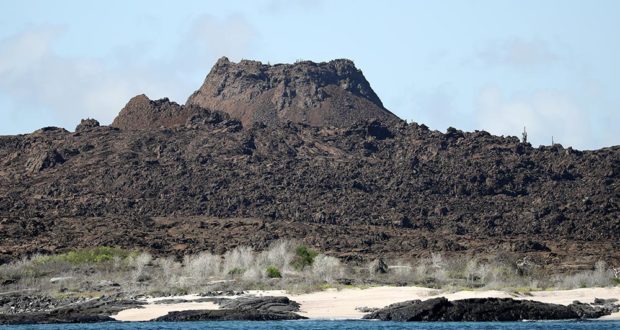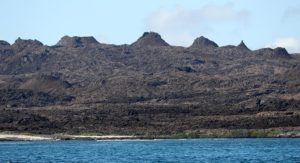The Beagle sailed round Chatham Island, and anchored in several bays. One night I slept on shore on a part of the island, where black truncated cones were extraordinarily numerous: from one small eminence I counted sixty of them, all surmounted by craters more or less perfect. The greater number consisted merely of a ring of red scoriae or slags, cemented together: and their height above the plain of lava was not more than from fifty to a hundred feet; none had been very lately active.
Charles Darwin, 17 September 1835
Along the barren northern coast of San Cristobal, small jagged volcanic cones rise above the beach and proliferate in the surrounding hills. The rocky hillocks are not the volcanoes that built the island, such as the crater that forms El Junco lake, but associated spatter cones, where gobs of lava were thrown out of small vents by escaping gases, falling nearby to form layered, symmetrical cones. The largest ones rise perhaps 100 feet above the beach. There are many relatively close together, creating a ragged black and brown lava field punctuated by spatter cones in assorted sizes.Of course the Galapagos themselves are simply accumulations of basaltic lava that began on the sea floor and slowly rose to emerge from the surrounding sea. They are the result of a hot spot, a persistent plume of hot magma rising through the mantle that periodically pushes through the migrating Nazca tectonic plate above. As the plate moves, old islands migrate eastward and new islands appear in their wake to the west. San Cristobal is the oldest of the main Galapagos Islands, at about 3 million years. Isabella and Fernandina, which have recently active volcanes, are the youngest at about 1 million years.
As with its main volcanoes, the spatter cones on San Cristobal are long extinct.

